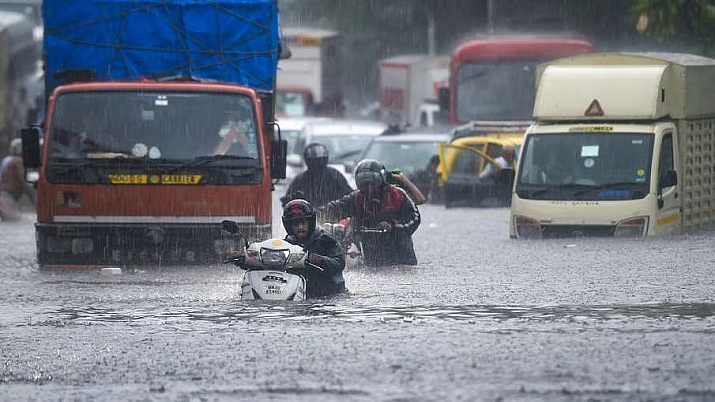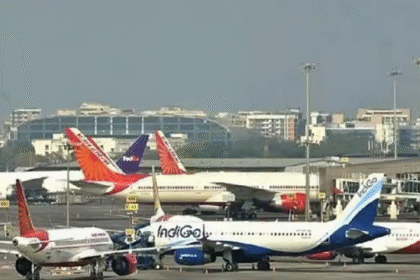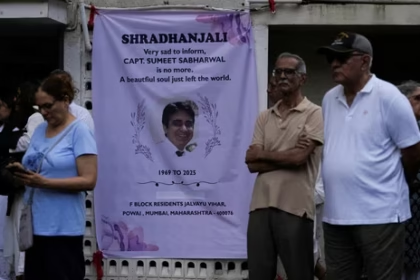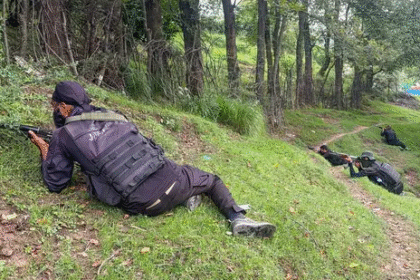Heavy Rainfall Halts City, 200+ Trains Suspended & Millions Affected
Mumbai faces chaos as record-breaking heavy rainfall in 2025 brings the city to a standstill. Over 200 trains suspended, flights delayed, and millions of commuters stranded amid flooding
Torrential rains Tuesday brought Mumbai and its neighbouring districts to a standstill as train services between Chhatrapati Shivaji Maharaj Terminus (CSMT) and Thane stations, as well as on the Harbour Line, between Kurla and CSMT, were suspended until further notice. Shuttle services, meanwhile, are running between Thane – Karjat, Khopoli and Kasara stations. Schools, colleges, government and civic offices remained shut as the India Meteorological Department (IMD) issued a ‘red’ alert, warning of extremely heavy rainfall throughout the day.
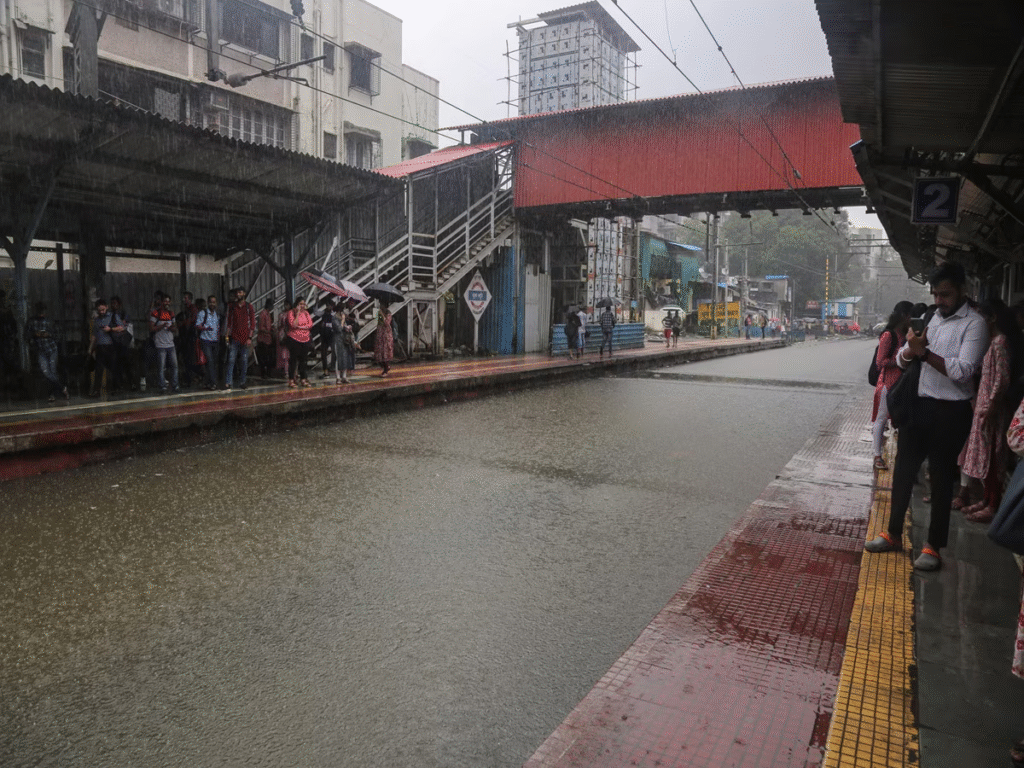
Meanwhile, teams of the NDRF teams and Indian Army have been deployed to assist in flood relief operations and evacuations in several affected areas, including the Nanded district. Across Maharashtra, around ten lakh hectares of agricultural land on which kharif crops were sown have submerged under water.
Maharashtra Chief Minister Devendra Fadnavis, addressing a press conference, said that the water levels of Mithi river touched the ‘danger’ mark on Tuesday, triggering evacuations by deployed team of NDRF in Kurla’s Kranti Nagar amid flooding in the area. The CM is continuously reviewing and the Municipal Commissioner is monitoring the situation.
Mumbai, India’s bustling financial capital, once again finds itself battling nature’s fury as relentless monsoon showers brought the city to a complete standstill. On Monday, 19 August 2025, heavy rainfall lashed several parts of the metropolis, causing severe waterlogging, traffic paralysis, suspension of train services, and widespread commuter chaos. According to official updates, more than 200 train services were suspended until further notice, while millions of daily commuters struggled to reach their destinations.
The India Meteorological Department (IMD) reported that parts of South Mumbai and Western Suburbs recorded over 250 mm of rainfall within 12 hours, making it one of the heaviest downpours this monsoon season. The relentless showers began late Sunday night and continued throughout Monday morning, turning arterial roads into rivers and flooding low-lying neighborhoods.
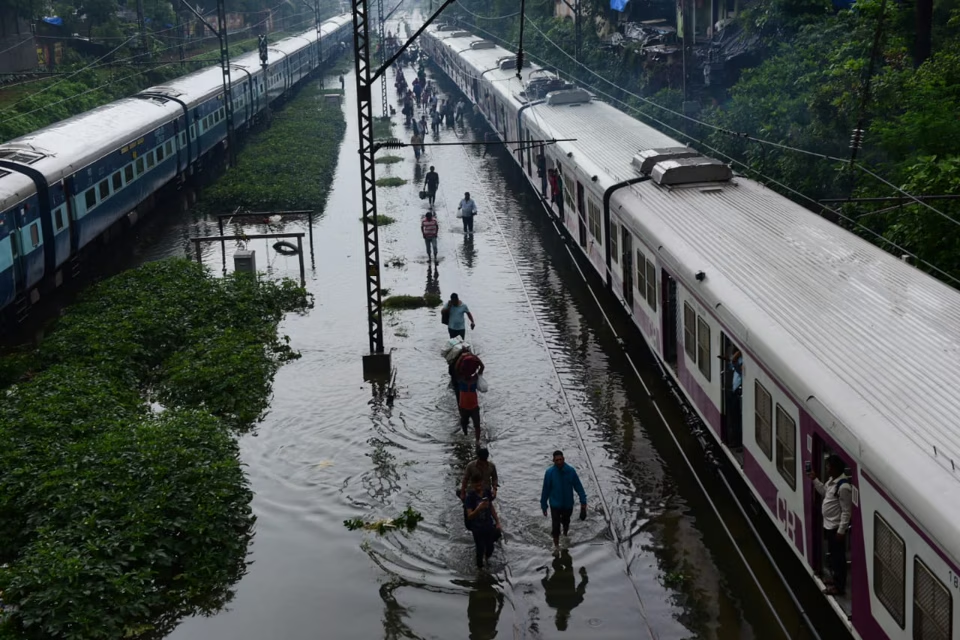
Areas such as Sion, Dadar, Andheri, Kurla, and Chembur were worst affected, with knee-deep to waist-deep water reported in several pockets. Visuals circulating on social media showed vehicles submerged under water, BEST buses stranded mid-road, and passengers wading through flooded railway tracks.
Mumbai’s suburban railway network, widely referred to as the “lifeline of the city,” was the worst casualty of the deluge. Central Railway and Western Railway authorities jointly announced suspension of services after water levels on the tracks rose beyond safe operational limits. By late afternoon, more than 200 train services had been canceled or suspended, leaving thousands of passengers stranded at stations.
Long queues of passengers were seen at Chhatrapati Shivaji Maharaj Terminus (CSMT), Dadar, Bandra, and Churchgate, where announcements of indefinite delays caused panic and frustration. Railway officials stated that services will only resume once the water levels recede and safety checks are conducted on signals, tracks, and power supply systems.
“Passenger safety is our utmost priority. Until tracks are completely cleared and inspected, we cannot risk running trains,” a senior Central Railway spokesperson said.
The crisis extended to air travel as well. At Chhatrapati Shivaji Maharaj International Airport, at least 40 domestic and international flights were delayed, while a handful of flights were diverted to Ahmedabad and Pune due to low visibility and waterlogged runways.
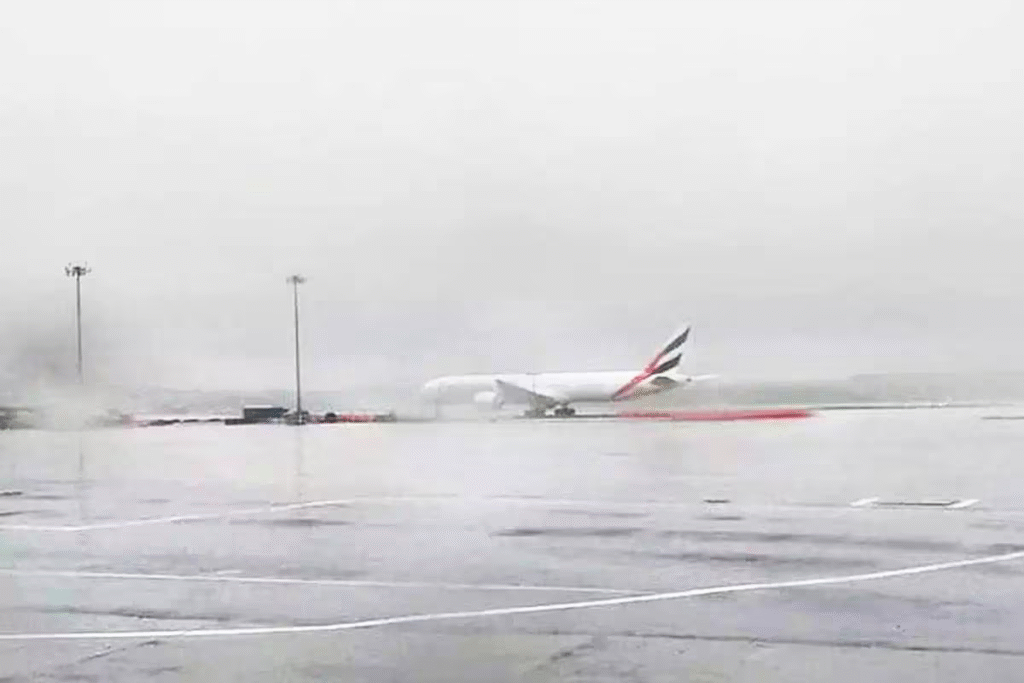
On the roads, Mumbai’s iconic Western Express Highway and Eastern Express Highway witnessed massive traffic jams stretching for kilometers. Many vehicles broke down in submerged underpasses, further choking the flow of traffic. Ola and Uber ride-hailing services recorded surge pricing up to 5X the normal rates, adding to the woes of office-goers.
Authorities in several municipal wards issued advisories urging schools to declare a holiday in view of the dangerous conditions. Many schools and junior colleges across the city suspended classes for the day, citing safety concerns for students.
While state government offices remained officially open, attendance was reported to be less than 40%, as employees struggled to find transportation. Several corporate houses in the Bandra-Kurla Complex (BKC) and Lower Parel also asked employees to continue working from home.
The IMD issued a red alert for Mumbai, Thane, and Raigad districts, warning of extremely heavy rainfall exceeding 200 mm in the next 24 hours. The advisory urged residents to stay indoors, avoid unnecessary travel, and remain cautious of rising water levels in rivers and lakes surrounding the city.
Officials confirmed that water levels in the Powai Lake and Tulsi Lake—two of Mumbai’s vital reservoirs—were already close to the overflow mark. The Brihanmumbai Municipal Corporation (BMC) activated pumping stations at Parel, Love Grove, and Kurla to flush out accumulated rainwater.
The National Disaster Response Force (NDRF) deployed four rescue teams in vulnerable pockets such as Kurla, Chunabhatti, and Sion. Fire brigade officials attended to over 120 emergency calls, including those of short-circuit fires, wall collapses, and people stranded inside stalled elevators due to power outages.
Ambulances were seen struggling to navigate through waterlogged lanes, prompting authorities to deploy small boats in some areas for emergency patient transfers.
For ordinary Mumbaikars, the deluge was a grim reminder of the city’s long history of monsoon disruptions. Many commuters expressed frustration at the lack of preparedness despite repeated promises of “flood-proofing” the city.
“I started from Borivali at 8 AM to reach my office in Andheri. By 11 AM, I was still stuck in waterlogging near Jogeshwari. Finally, I returned home walking,” said 34-year-old IT professional Ritesh Mehta.
Another commuter, college student Sneha Nair, narrated her ordeal: “Our train stopped between Kurla and Sion due to flooding on the tracks. After waiting for more than an hour, we were told to get down and walk on the tracks to reach the nearest station. It was scary and unsafe.”
Maharashtra Chief Minister Eknath Shinde chaired an emergency meeting with BMC and disaster management officials. He assured that the government is closely monitoring the situation and urged citizens to cooperate with authorities.
“Rescue teams are on the ground, and necessary relief measures are being taken. Citizens are requested to remain indoors and avoid unnecessary travel,” the CM said in a public statement.
Meanwhile, opposition leaders criticized the BMC for failing to implement flood-control measures despite spending crores of rupees in recent years. “Every monsoon, the same story repeats—flooding, train suspensions, stranded citizens. This reflects poor governance and lack of accountability,” tweeted a senior Congress leader.
As always, social media platforms like X (formerly Twitter), Instagram, and Facebook were flooded with real-time updates, videos, and memes on the situation. Hashtags like #MumbaiRains, #MumbaiFloods, and #MumbaiStandstill trended nationwide as netizens shared both their struggles and moments of humor in the face of adversity.
Several Bollywood celebrities also voiced their concern. Actor Riteish Deshmukh tweeted: “Hope everyone in Mumbai is safe. Please don’t venture out unless absolutely necessary.”
Experts warn that Mumbai’s monsoon challenges are likely to intensify with climate change, rising sea levels, and unchecked urbanization. Despite repeated investments in pumping stations, storm-water drains, and infrastructure upgrades, the city continues to crumble under the weight of every extreme downpour.
Environmentalists argue that encroachments on natural drainage channels like the Mithi River, coupled with poor waste management, have exacerbated flooding risks. Unless long-term structural reforms are undertaken, they caution, Mumbai will continue to witness such standstills year after year.
Read Also : Raj Kundra’s Shocking Kidney Offer to Guru Leaves Shilpa Shetty Stunned — Viral Video Hits Millions in 2025


